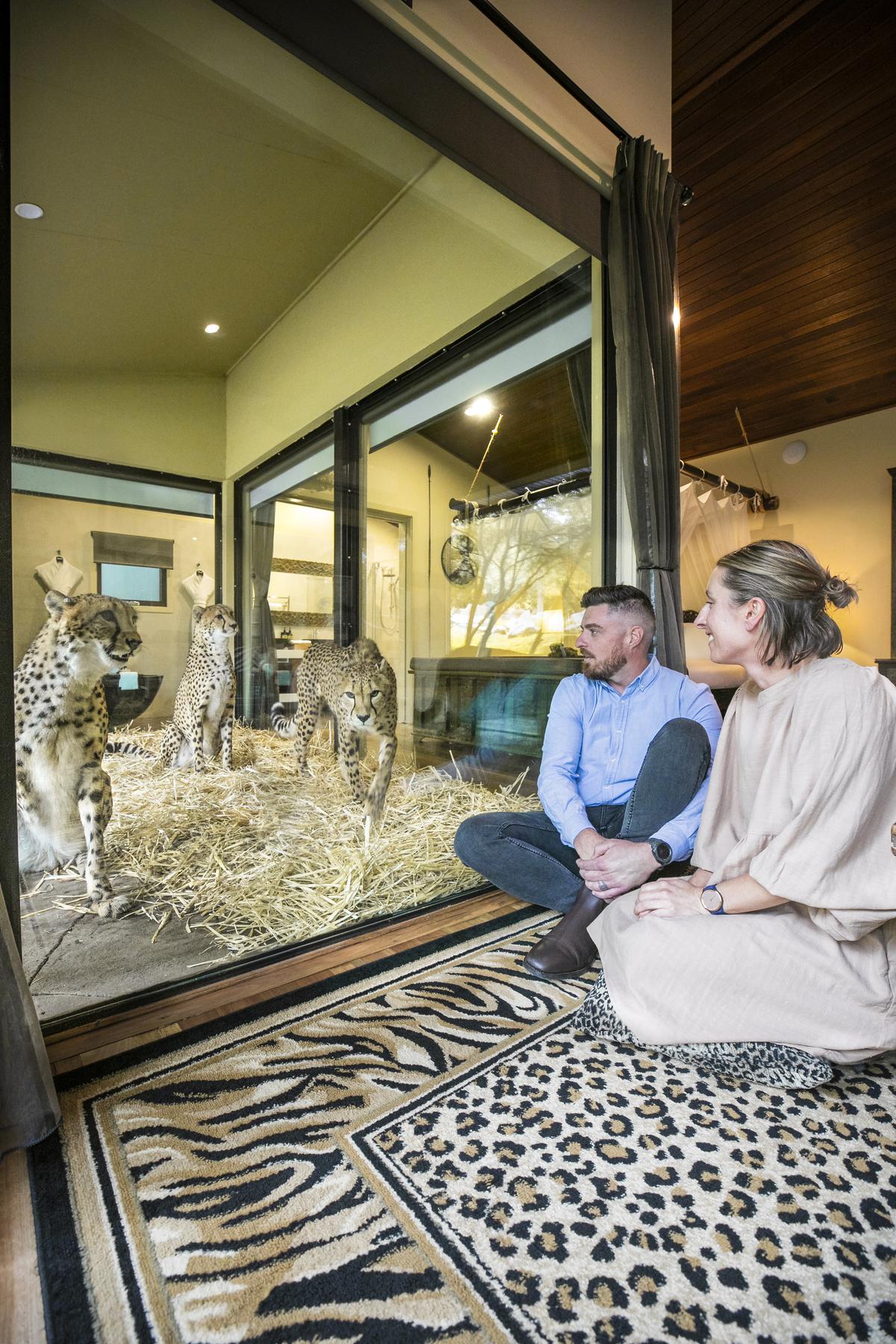
The lodge has three categories of rooms
A tiger sits outside my bathroom. Separating us is a three-centimetre, double-laminated glass window. His gaze follows me as I gingerly tread across the bathroom floor. I brush my teeth, wash my face; our eyes trained on each other all the while. But soon he gets bored. Perhaps my grooming session isn’t intriguing enough. Yawning disinterestedly, he curls up and takes a nap.
In the neighbouring villa, a Malayan sun bear is the source of much excitement. He has stationed himself outside my friend’s room. Unlike the lazy tiger, the bear has a hobby: that of folding pieces of cloth. Using those he makes a snug bed for himself to laze on.
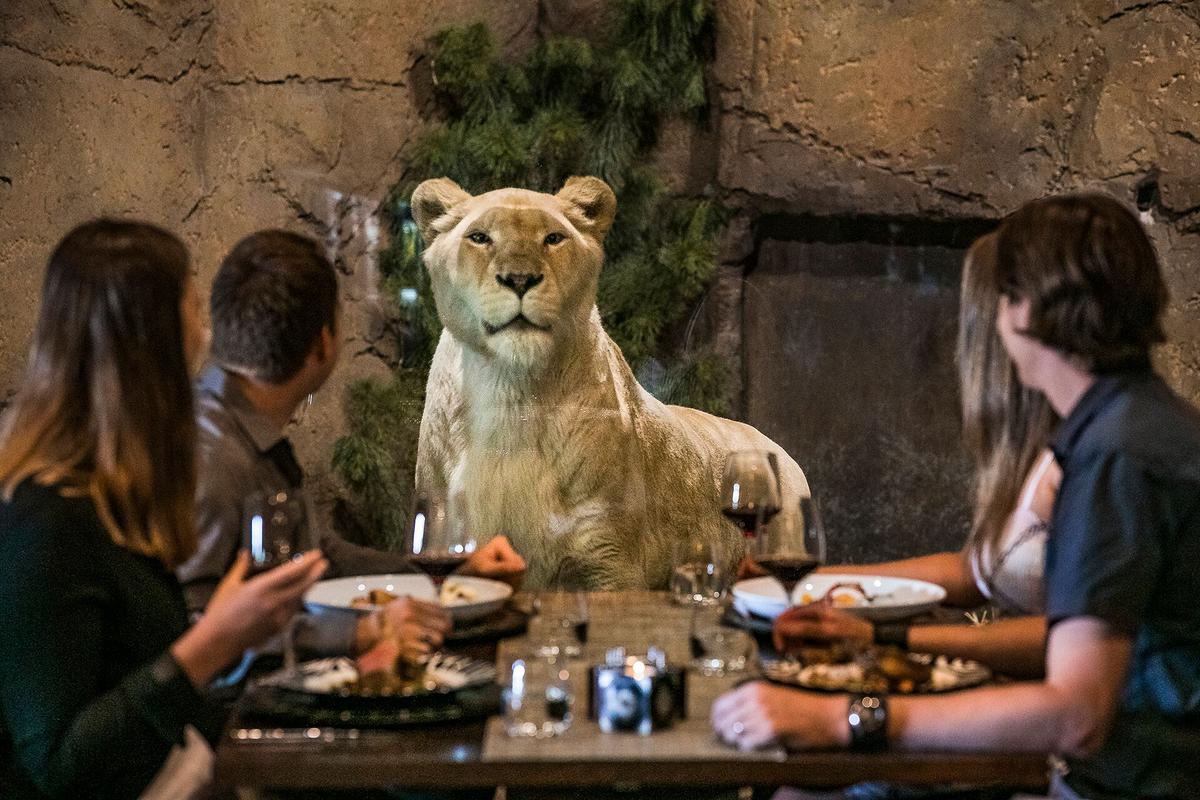
Dinner at the Rainforest Cave features an African menu and a guest appearance by a pair of white lions
At Jamala Wildlife Lodge in Canberra, Australia, guests can stay in proximity to animals. This luxury property was added to the National Zoo and Aquarium in 2014, with the intention of supporting the zoo and animal conservation. “It’s something we are succeeding in. All the proceedings from Jamala Wildlife Lodge go into conservation and breeding programmes, as well as the day-to-day care of the animals. We have raised $200,000 (Australian dollars) toward cheetah conservation alone,” says Jemma Walsh, manager, Jamala Wildlife Lodge and National Zoo and Aquarium.
In 1990, this space first opened as the National Aquarium. It featured a 1.5 million litre aquarium tank with the first underwater viewing tunnel. In 1998, it was purchased by the Tindale family, who currently own the zoo.
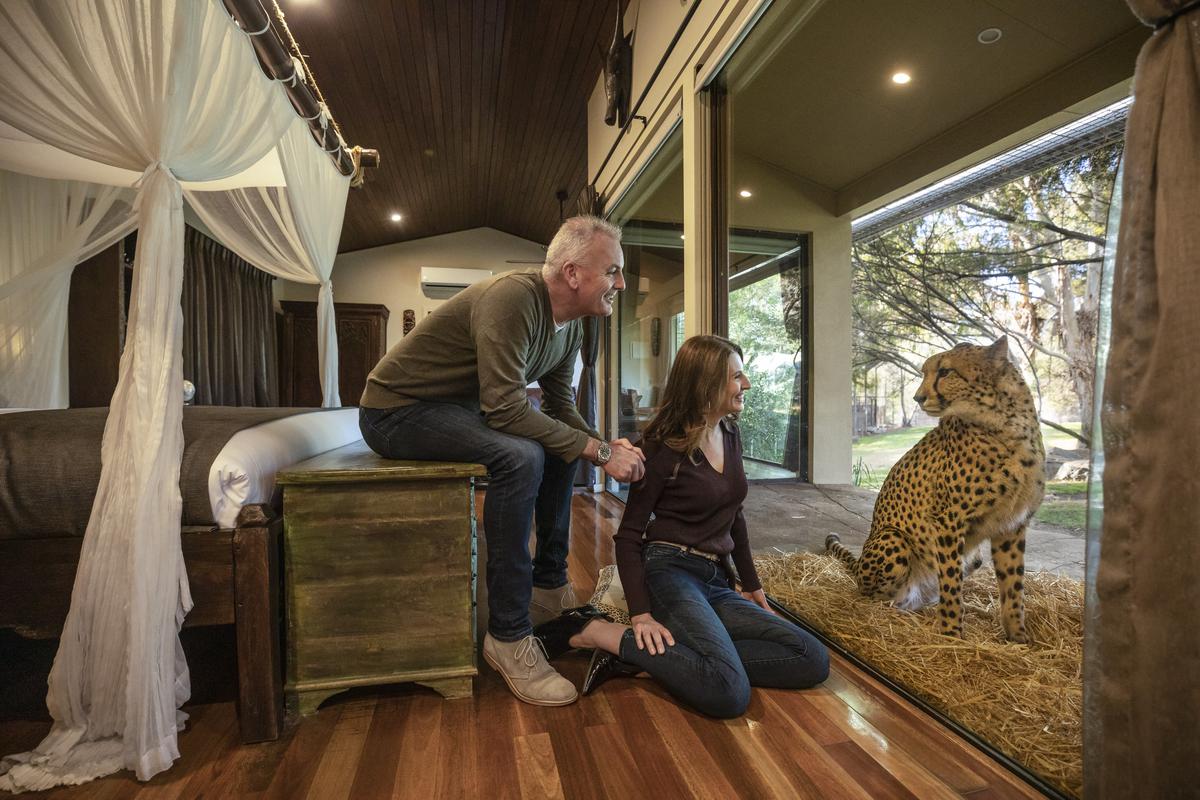
Jamala Wildlife Lodge shares 15 species with the zoo, which is home to over 200 animal species.
At that point, it was just seven hectares of land. The Tindale family worked on it — adding the zoo and the African-style Jamala lodge that is designed by them and heavily influenced by their travels to Africa — and now the property is a sprawling 19 hectares (approximately 47 acres).
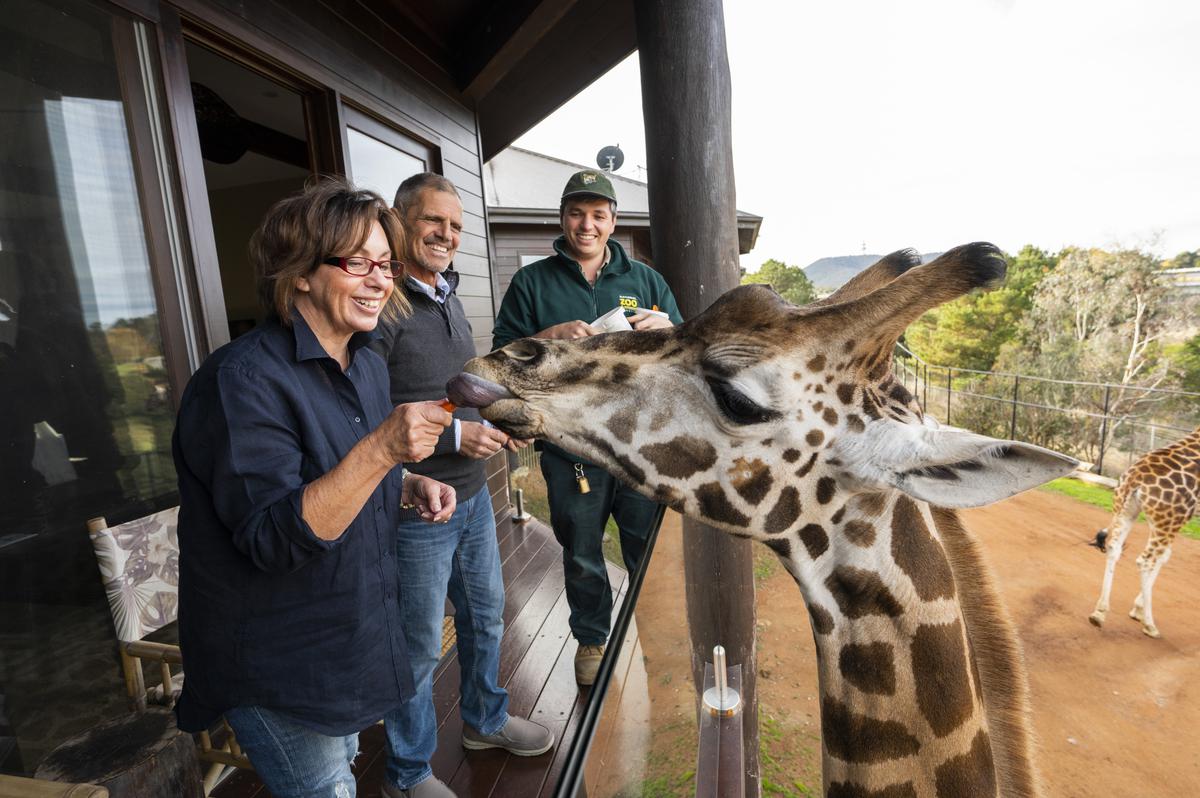
A giraffe stopping by for a snack
| Photo Credit:
Special Arrangement
The lodge has three categories of rooms — Giraffe Treehouses (where giraffes named Skye and Khamisi gently amble along your verandah, and you can feed them a snack), The Jungle Bungalows that adjoin enclosures within the zoo, and the Ushaka Rooms. The last two have large glass windows that allow humans and animals to get a glimpse of each other’s lives. “The glass can withstand strenuous amounts of pressure. It is unlikely that the animals would touch the glass other than when they are cuddled up to sleep,” reassures Jemma. The glass is not one way, the animals can see you just as clearly as you can see them, she adds.
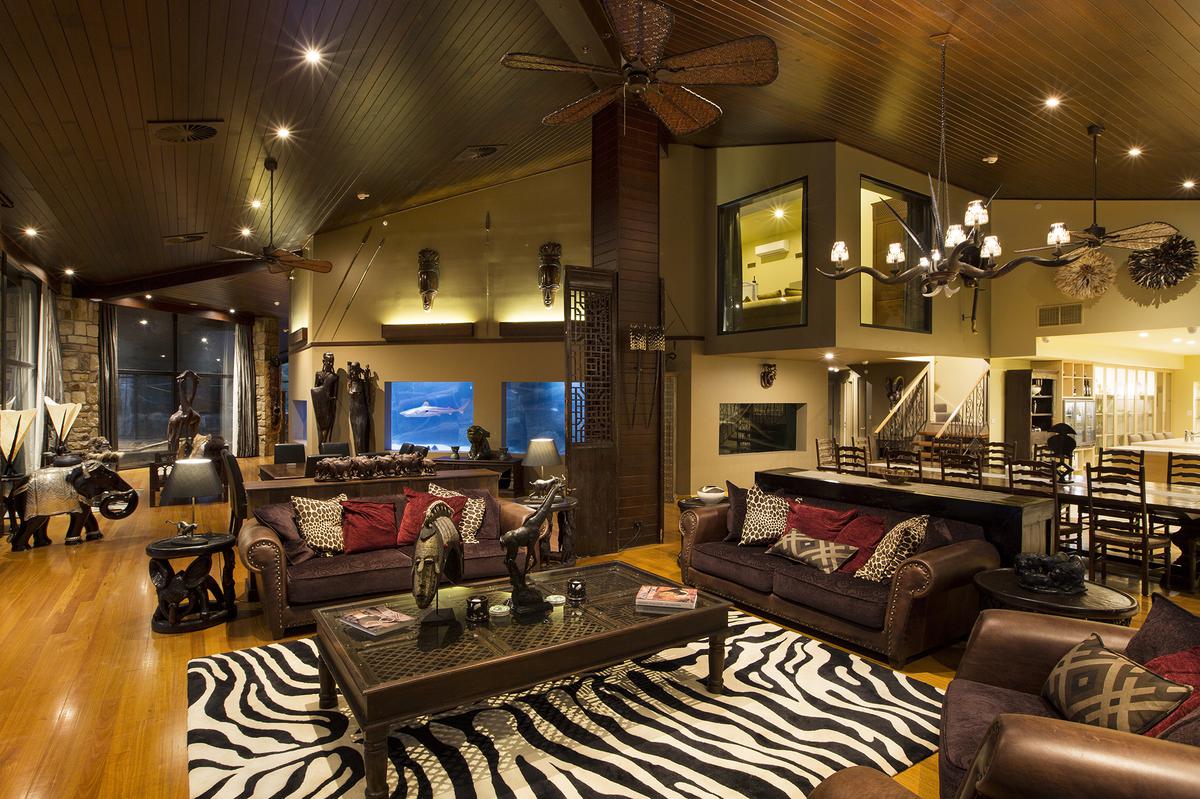
The lodge is heavily inspired by the Tindale family’s travels to Africa
Jamala Wildlife Lodge shares 15 species with the zoo, which is home to over 200 animal species. There are cheetahs, meerkats, hyenas, African painted dogs, white lions, Sri Lankan leopards… Some of these inmates have also been rescued from other places. “Our beautiful sun bears Otay and Arataki have one of the most heartbreaking backstories,” says Jemma. Otay was captured by poachers as a baby and kept in a tiny cage, in an illegal bear bile farm in Cambodia, for the first two years of her life. “She was rescued, along with Aratiki, by a Perth-based not-for-profit called Free the Bears that goes into illegal bear farms and liberates the bears,” narrates Jemma.
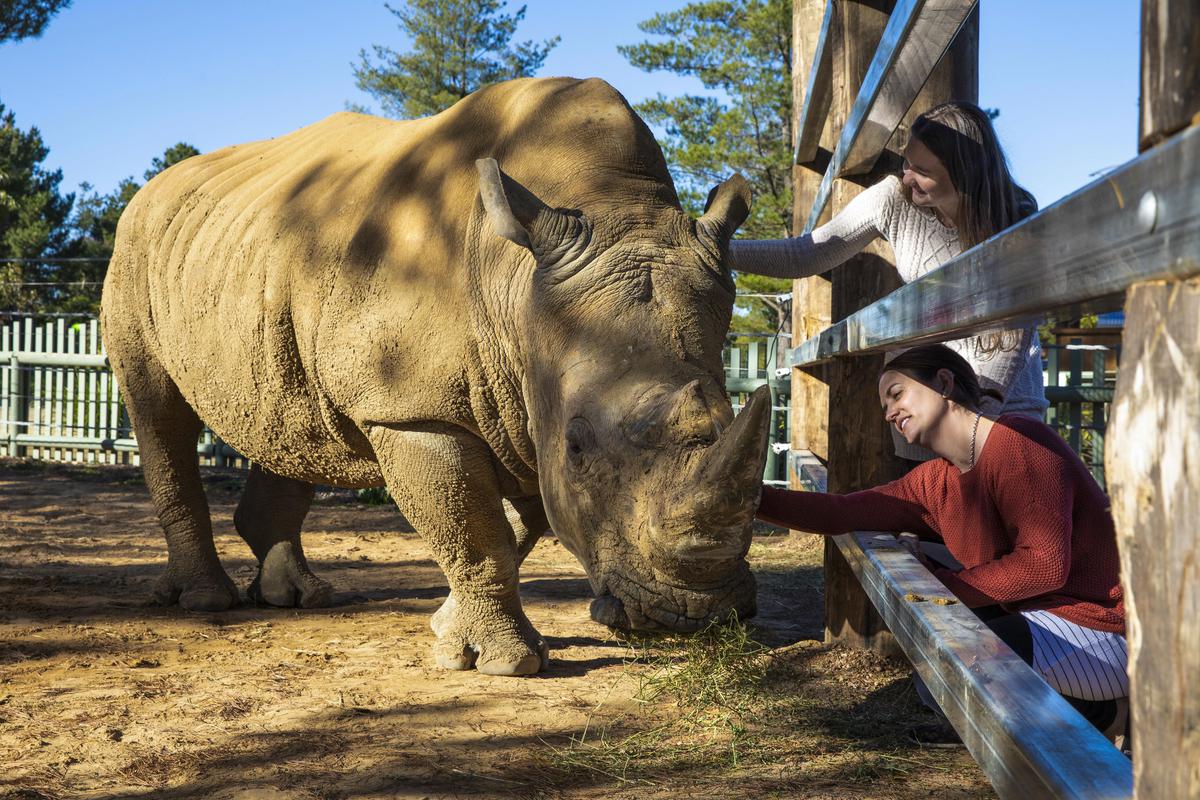
Hungry hippo
Days at the lodge are usually spent eating, drinking and animal spotting. On arrival at the lodge, we are welcomed with high tea at the lobby that looks like a safari lodge straight out of Kenya. Interesting artefacts dot the place and a large aquarium runs along one side. Fish in myriad shades and sizes swim past. There is a unique blue fish that almost looks like it is AI-generated. Also keeping us company are two colobus monkeys — furry, and black-and-white in colour. They regard our presence, and then go back to their monkey business.
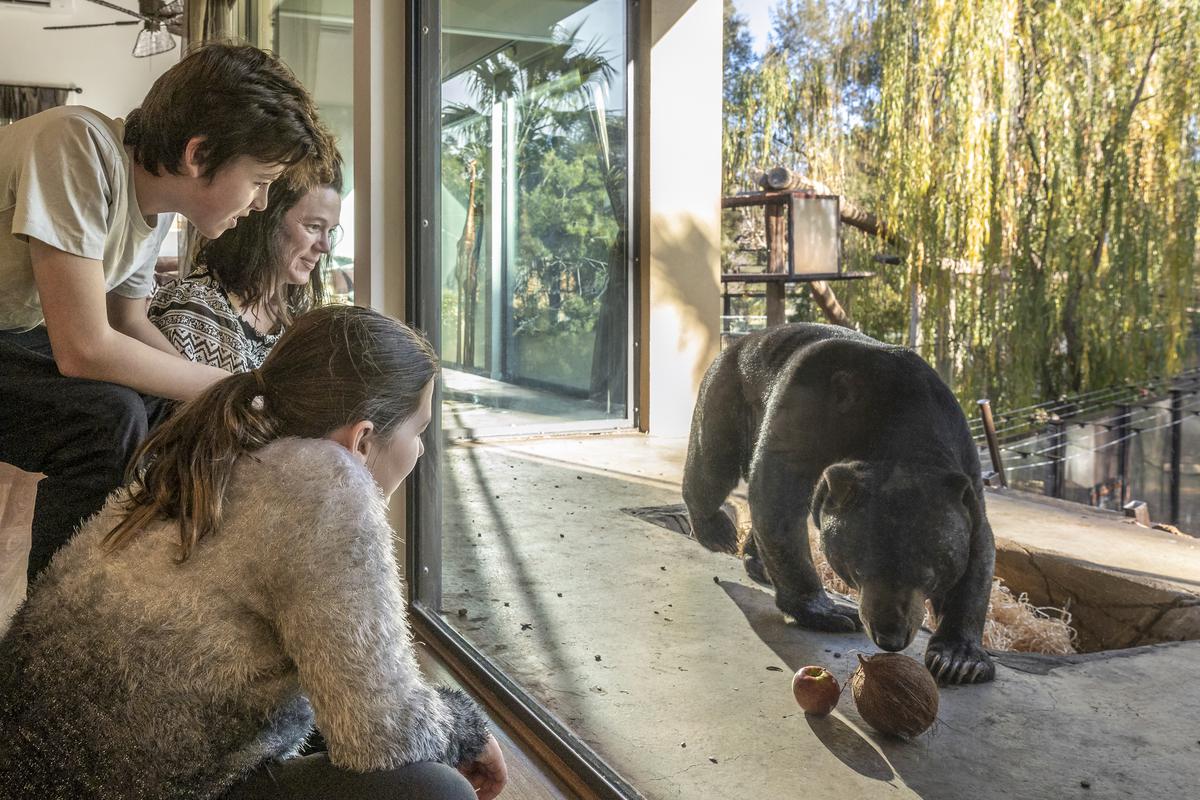
Through the day, we wander around the aquarium (this is the first time I saw a seahorse up close) and the zoo, excitedly creating reels and spotting animals camouflaged in the foliage. The animals go about doing their own thing. Some even look at us bemusedly. “Each animal is on a specific schedule. Most of their days include lounging in the sun and playing with their mates,” says Jemma. There are also guided tours of the zoo and animal feeding sessions. On one such tour, we learn that the giraffes are quite popular among the smaller animals. As they eat from the top of trees, they drop a lot of food which other animals happily feast on. It’s almost like they throw the best parties.
Party in the den
Dinner at Jamala feels like a celebratory affair. We assemble at the Rainforest Cave (an underground dining area) for an African dinner party featuring a four-course meal and special guests for the evening — hold your breath — a pair of white lions. They are regally seated within an enclosure with glass on one side and thick metal grille on the other. They are brought here through a unique den system underneath the dining area, explains Jemma. “This allows the apex predators to safely travel between their enclosures and the den,” she says.
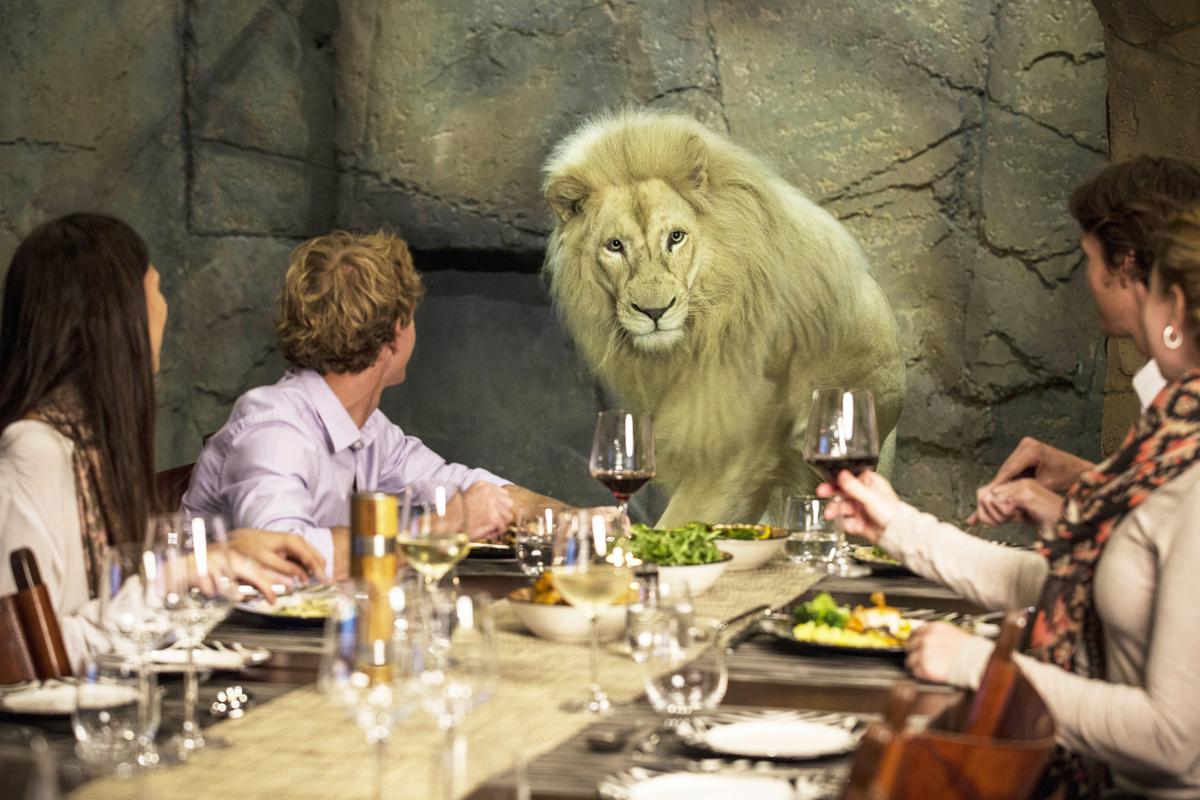
Throughout the stay, the animals let their presence known. In the dead of the night, I am awakened by a thudding sound above. It stops, and starts again. The capuchin monkeys have decided to make this their play time. Adding to the orchestra of sounds are the barking owls and ruffed lemurs. It is all very exciting. And before you complain, remember, this is their space, and we are mere visitors. I drift off to sleep and wake up even before my alarm rings. The lions are awake and have managed to wake up the rest with their thundering roars, which probably translate to Good Morning. Bye for now, it’s another splendid day of bonding with the animals.
The tariff starts at $1,650 and varies according to the room category and day of the week.
(The writer was in Canberra on invitation of Tourism Australia)
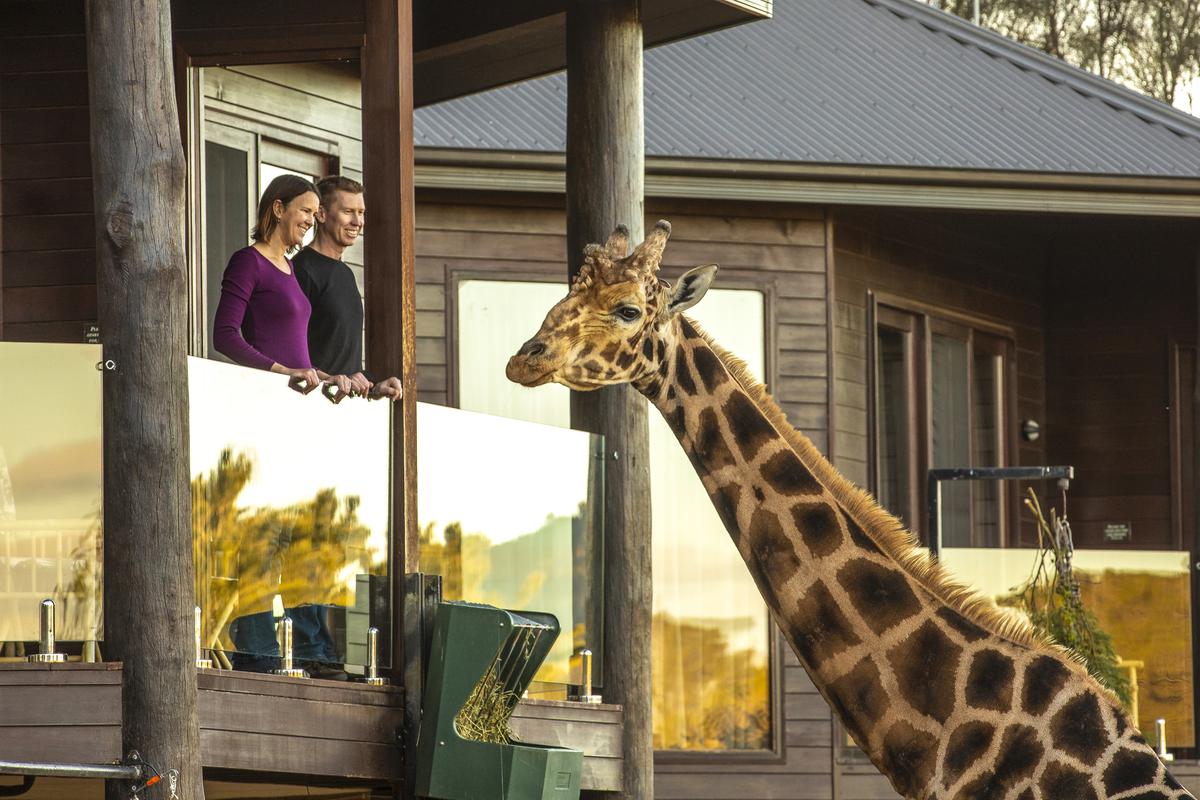
Stay connected with us on social media platform for instant update click here to join our Twitter, & Facebook
We are now on Telegram. Click here to join our channel (@TechiUpdate) and stay updated with the latest Technology headlines.
For all the latest Life Style News Click Here
For the latest news and updates, follow us on Google News.
